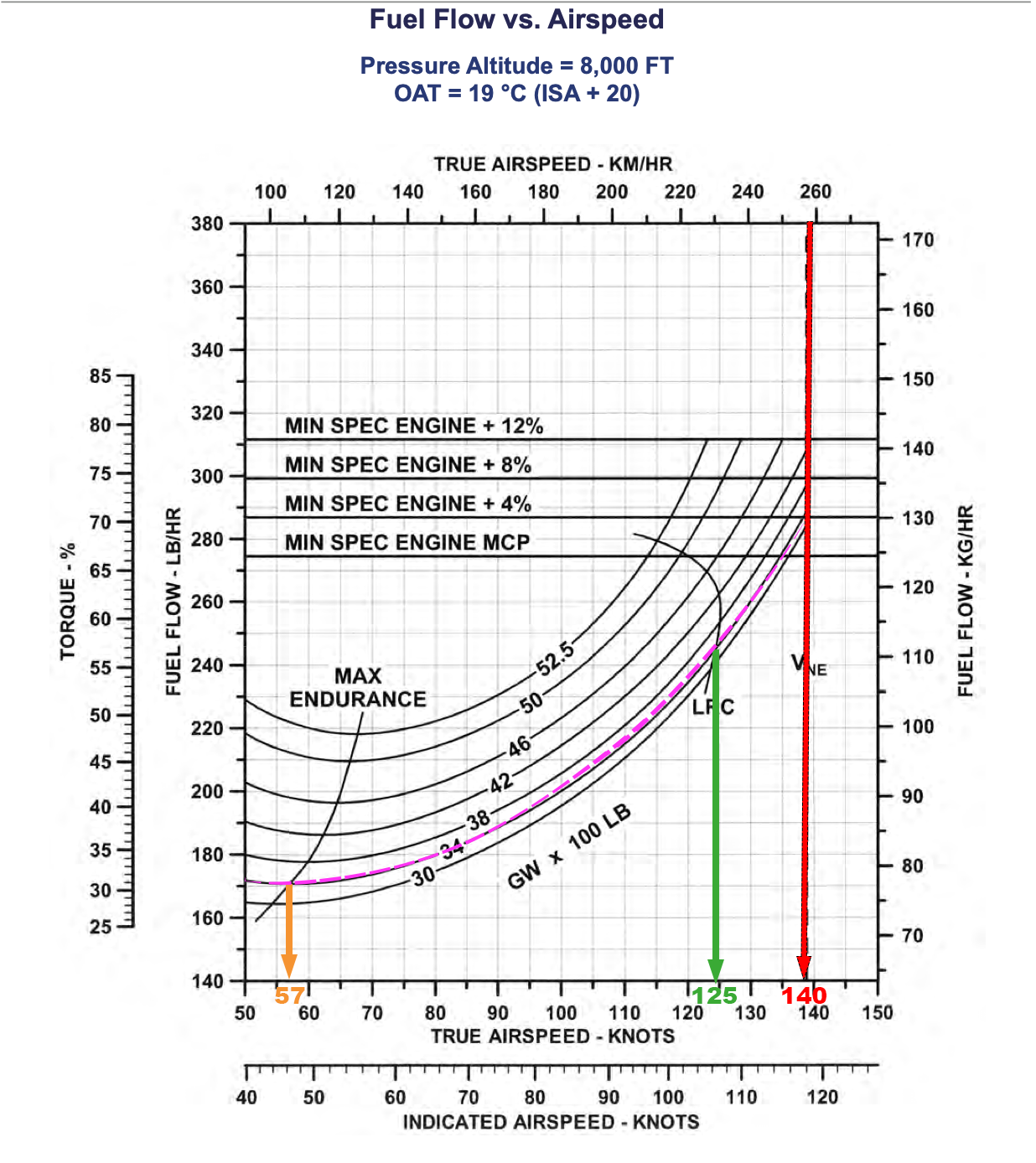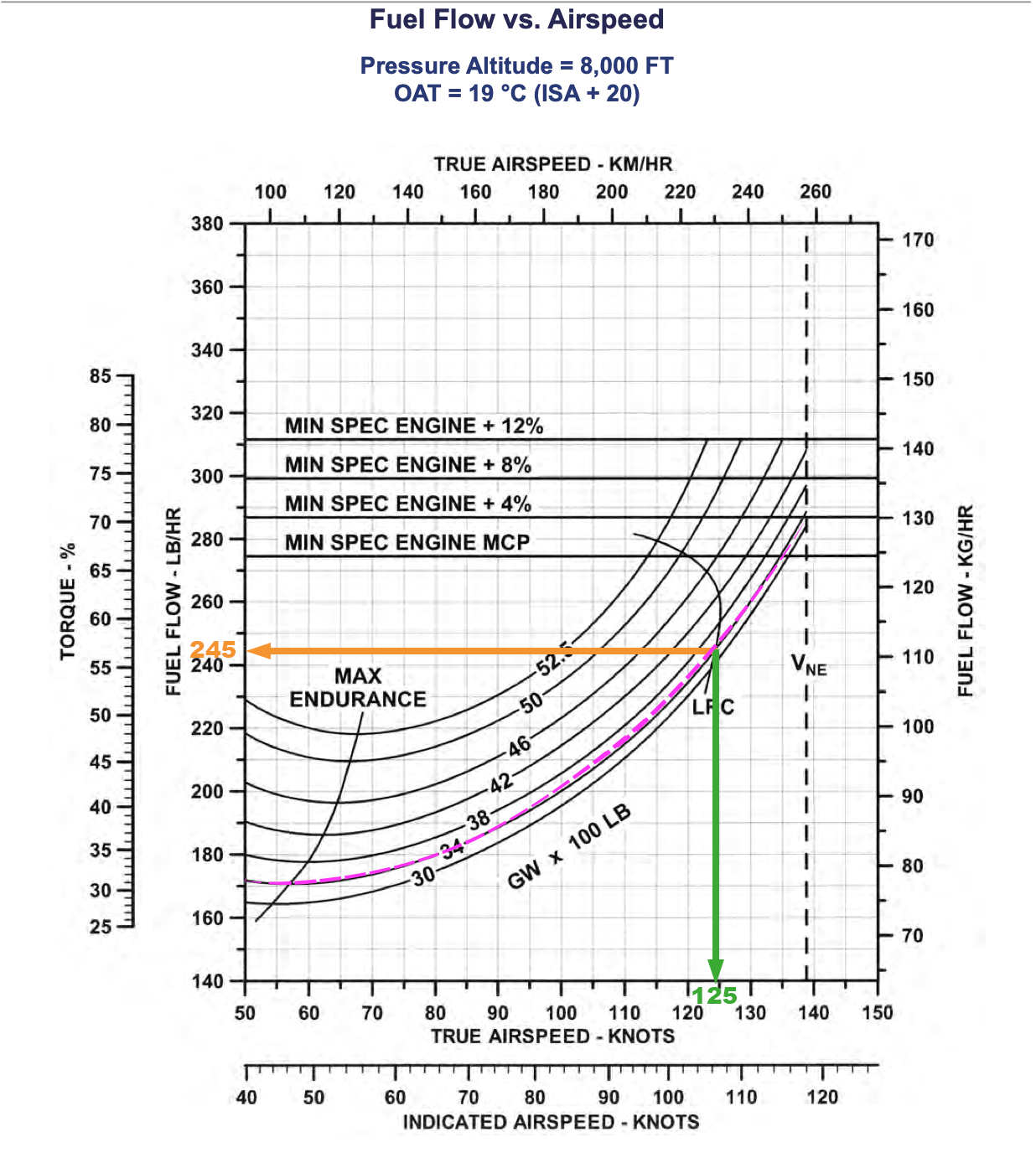¶ Introduction
Main aim of cruise calculations is finding required fuel for a given flight.
These calculations also provide supplementary information like max endurance or long range cruise speeds as well as fuel flow for a specific speed.
¶ Endurance and Range
Endurance is the time that a helicopter can remain airborne with the fuel available. It will be greatest when fuel flow, total drag and power requirement is minimal.
The maximum endurance speed for helicopters usually corresponds to a value somewhere between 50-70 knots.
Range is the distance traveled with the fuel available. Maximum range speed provides the greatest distance for the fuel carried or the least fuel for the distance which is required to travel.
Maximal range speed is used for the best fuel/milage efficiency.
Long Range Cruise speed is defined as the speed above Maximum Range that will result in a 1 percent decrease in fuel mileage in terms of nautical miles per kilogram or pound of fuel burned.
LRC speed provides 2-3% faster cruise speed with sacrificing 1% of the range. When fuel consumption is not the primary concern, LRC speed is an operational alternative for the maximum range speed.
¶ Sample Cruise Problem
¶ Conditions and Objectives
Helicopter: Bell 407
- Take off Power: 100 %
- Pressure Altitude: 8000 feet
- Gross Weight: 3400 lb
- OAT: ISA+20 C
- Wind calm
- Heater and anti-ice off
- Route: 250nm.
Objectives:
1. Find the maximum endurance speed.
2. Find the maximum long range cruise speed.
3. Find the VNE speed.
4. Find the fuel consumption in LRC speed.
¶ Maximum Endurance, LRC and VNE Speeds
Go to the Fuel Flow vs. Airspeed table .

⠀1. Enter the appropriate pressure altitude chart for 8000ft and ISA +20.
⠀2. Mark the intersection between 3400lb and Max Endurance curve.
⠀3. Drop down vertically and read the max endurance speed 57knots.
⠀4. Mark the intersection between 3400lb and LRC curve.
⠀5. Drop down vertically and read the LRC speed 125knots.
⠀6. Drop down vertically from Vne line and read Vne speed 140knots.

⠀1. Mark the intersection between 3400lb and LRC curve.
⠀2. Drop down vertically and read the LRC speed 125knots.
⠀3. Find the flight duration 250/125 = 2hrs.
⠀4. Proceed horizontally to fuel flow 245 lb/hr.
⠀5. Find the fuel consumption 245 * 2 = 490lbs.
- None
- VID 522050 - Creation
- VID 496402 - Wiki.js integration